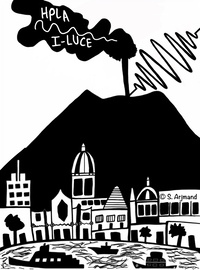Speaker
Description
Recent progress in multi-petawatt (PW) laser technology has enabled compact, high-energy electron acceleration and intense photon generation, expanding the frontier of laser–plasma physics. Using a 4 PW laser system [1], we demonstrated a high-quality 4.5 GeV electron beam from a helium gas cell doped with 1% neon, establishing a foundation for GeV-scale, table-top electron accelerators. The neon dopant significantly improves electron energy, energy spread, and charge, compared to a pure helium medium. The simulations showed that the sequential ionization of neon provides suitable self-guiding conditions through pulse sharpening, while the inner-shell ionization induces localized ionization injection. These results indicate that neon as a dopant can be a suitable choice for high-quality electron beams with PW laser pulses.
Building on this capability, we experimentally realized a hybrid betatron radiation scheme [2] that decouples electron acceleration and radiation generation in a two-stage gas medium. A low-density gas cell first produced relativistic electron beams, followed by a short, high-density gas jet serving as an efficient radiator. This configuration substantially enhanced betatron emission, yielding a critical photon energy of ~0.5 MeV and a photon flux exceeding 10¹⁰ photons per shot. The resulting gamma-ray source exhibited a brilliance of ~5 × 10²⁴ photons/s/mm²/mrad²/0.1% BW, peaking at 180 keV—among the brightest compact sources achieved to date. The hybrid design mitigates the inherent trade-offs of single-stage schemes by independently optimizing acceleration and emission, leading to improved photon yield, spectral quality, and stability.
These results establish a versatile platform for a broad range of applications and provide a powerful tool for investigating nonlinear Compton scattering [3] and radiation reaction. The demonstrated scalability of multi-PW laser systems indicates that extending this approach can access higher electron and photon energies and fluxes, thereby advancing compact electron and radiation sources and enabling exploration of extreme light–matter interaction regimes.
References
[1] J. H. Sung, et al., Opt. Lett. 42, 2058 (2017).
[2] J. Ferri et al., Phys. Rev. Lett. 120, 254802 (2018).
[3] M. Mirzaie et al., Nat. Photonics 18, (2024).

